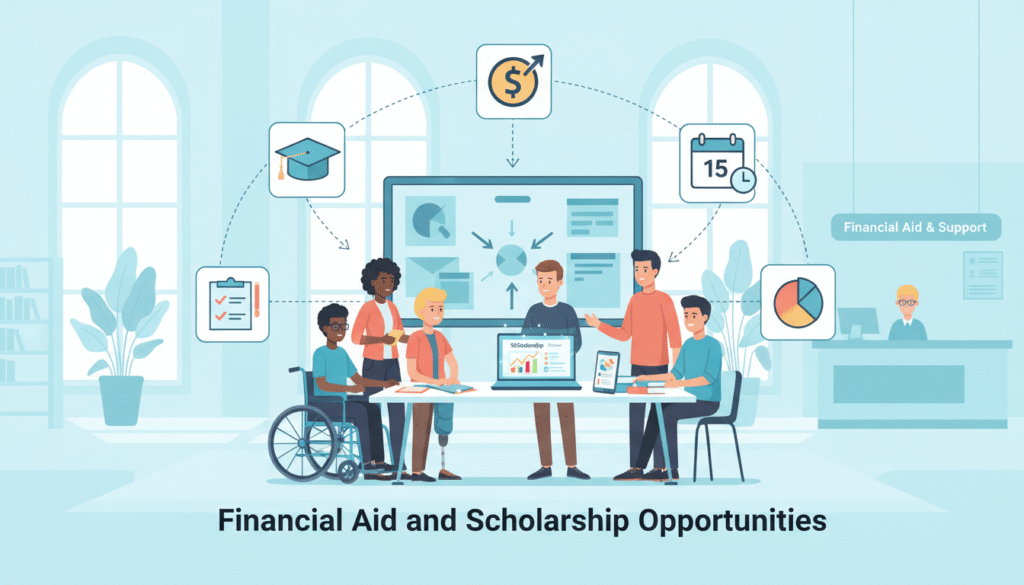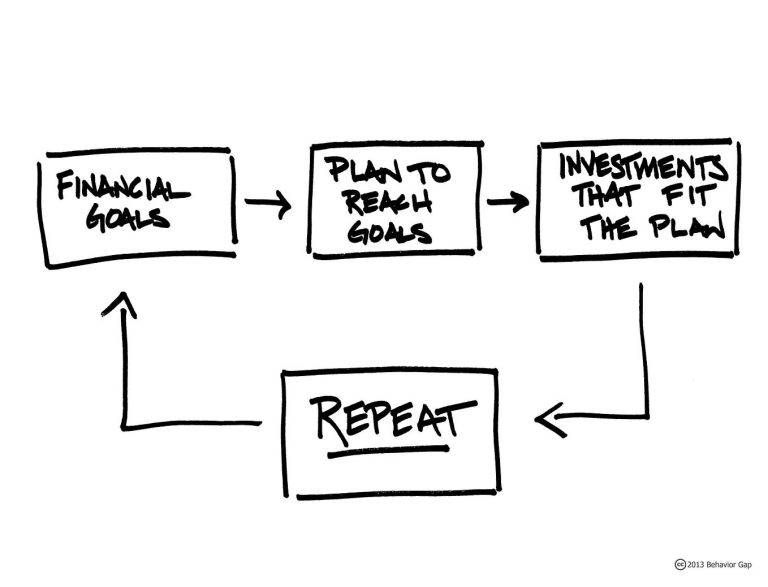Best Colleges for Financial Planning: Your Complete Guide to Top Programs this Year
Discover the best colleges for financial planning in our Vanika guide. Explore top programs, degree options, and career paths to help you build a successful future in financial planning.
Key Takeaways
- Over 179 colleges offer CFP Board-registered financial planning programs nationwide, and here’s something that surprised me—public universities consistently crush private institutions in competition rankings
- Top-tier programs like Texas Tech, Kansas State, and Utah Valley University boast 85-90% job placement rates and CFP exam pass rates above 75% (yeah, those numbers are as impressive as they sound)
- Financial planning graduates earn median starting salaries of $65,000-$80,000, with experienced pros pulling in $100,000+ annually—not bad for helping people figure out their money, right?
- CFP Board registration is absolutely crucial for quality education, and I can’t stress this enough—it ensures programs meet rigorous standards for future Certified Financial Planner certification
- Both undergraduate degrees and certificate programs are available, with many schools offering flexible online options for working professionals (because let’s face it, not everyone can drop everything and go back to campus)
You know what’s wild? The financial planning industry is absolutely exploding right now, and choosing the right college can literally make or break your career trajectory. I’ve spent countless hours digging through data on over 179 CFP Board-accredited institutions nationwide, and with a projected 15% increase in demand for personal financial advisors through 2032, selecting from the best colleges for financial planning has never been more critical—or honestly, more overwhelming.

Whether you’re a recent high school graduate still figuring out life, a career changer ready for something completely different, or a working professional seeking advancement (and maybe a little more respect at family dinners), this comprehensive guide will help you navigate what can feel like an impossibly complex landscape of financial planning education. From analyzing competition results spanning over a decade to examining real-world career outcomes, I’ll walk you through what actually separates exceptional programs from the “meh” ones.
Understanding Financial Planning Education
Here’s something I learned early in my research: financial planning as a career field isn’t just about being good with numbers—though that definitely helps. It’s this fascinating combination of analytical rigor and genuine people skills. Today’s financial advisors don’t just crunch numbers in a back room somewhere; they’re trusted advisors helping clients navigate everything from “Should I buy that house?” to “Will I ever actually be able to retire?”
The absolute backbone of quality financial planning education? CFP Board registration. I cannot emphasize this enough—if a program doesn’t have this accreditation, run. Don’t walk, run. This certification ensures that programs meet the rigorous standards established by the Certified Financial Planner Board of Standards, preparing students for the CFP exam (which is basically the gold standard for professionals in this industry). When I was researching colleges, CFP Board registration became my first checkpoint, and it should be yours too—it’s your guarantee that the curriculum covers essential financial planning concepts and ethics requirements.
Now, programs typically fall into three main categories, and understanding these can save you a lot of confusion. You’ve got undergraduate degrees (BA or BS), graduate degree options (master’s programs for those overachievers), and certificate programs. Undergraduate students can pursue dedicated financial planning majors—yes, that’s actually a thing—or related fields like business administration with financial planning concentrations. Many universities also offer professional designation programs for working professionals who are looking to level up their careers without starting completely over.
What really gets me excited about this field is how diverse the career paths are. Sure, you’ve got traditional roles working with established firms like Edward Jones or Wells Fargo, but I’ve watched graduates increasingly pursue independent advisory practices, wealth management positions at banks, or specialized roles in retirement planning and financial counseling. The versatility of financial planning education opens doors across the entire financial services sector—it’s like having a master key to the money world.
Top-Ranked Financial Planning Programs
Okay, here’s where things get really interesting. When it comes to identifying the best financial planning programs, I’ve found that competition results provide some of the most objective performance data you can get. The FPA Financial Planning Challenge, which I analyzed over 14 years using data from WealthManagement.com, reveals some clear standouts among colleges for financial planning.

Texas Tech University is an absolute powerhouse—seriously, these folks don’t mess around. They’ve earned 11 finalist positions since 2010, which is honestly just showing off at this point. Their program boasts a 90% job placement rate (I know, right?), and they offer comprehensive CFP Board-registered programs from undergraduate all the way through Ph.D. levels. What really impressed me when I dug deeper was their faculty expertise—many professors hold CFP credentials alongside their academic qualifications. The university’s commitment to practical learning shows in their student-run investment clubs and real-world case study competitions, which honestly sounds way more fun than regular homework.
Kansas State University matches Texas Tech’s impressive 11-time finalist record, but here’s where they get really innovative—they pioneered the nation’s first financial therapy certificate program. I mean, think about it: combining traditional finance coursework with psychology and human behavior studies? That’s brilliant, especially as the industry finally recognizes that money decisions are often more emotional than logical.
Utah Valley University (UVU) operates the largest undergraduate financial planning program in the country, and their industry connections are genuinely impressive—386,000 newsletter subscribers and 1.3 million monthly website pageviews. Those aren’t just vanity metrics; they show real engagement with the professional community. UVU’s AACSB-accredited program offers paid internships and dual major options, giving students flexibility and actual money-earning experience before graduation (because let’s be honest, we all need to eat).
The University of Missouri rounds out the top tier with comprehensive programs that emphasize community involvement. Students participate in tax preparation services for low-income families and run financial literacy programs for local schools—it’s this beautiful combination of technical learning with actual social impact that really gets me.
Purdue University consistently ranks in the top 20 nationally, and their student-run club activities are particularly strong. What sets them apart is how they leverage the university’s broader engineering and technology reputation, preparing graduates for what’s clearly becoming an increasingly tech-driven future of financial services.
Public vs Private Universities: What the Data Shows
Here’s something that really surprised me when I first started researching: public universities absolutely dominate the top program rankings in financial planning. This isn’t some random fluke—there are real structural advantages that public institutions bring to professional education.
Public colleges typically offer larger program enrollment, which creates these vibrant student communities and extensive alumni networks. Utah Valley University’s massive undergraduate cohort perfectly illustrates this advantage—students graduate with peer connections that literally extend throughout their entire careers. Large enrollment also attracts top faculty (professors want to teach where there’s energy and resources) and enables schools to offer specialized electives that go way beyond basic CFP Board requirements.
Now, let’s talk money—because we’re talking about financial planning education, after all. Cost represents a huge factor favoring public institutions. In-state tuition at schools like Kansas State or Texas Tech often costs half of comparable private programs, while still delivering superior career outcomes. I looked at Clemson University, for example—they charge just $13,982 annually for residents versus $32,800 for out-of-state students. That’s still competitive with many private alternatives, but the in-state deal is absolutely stellar.
Graduate program availability also heavily skews toward public universities. Schools like Texas Tech offer Ph.D. programs in financial planning (for those who really want to dive deep), while many private colleges limit themselves to undergraduate offerings. This academic depth attracts research-focused faculty who bring cutting-edge knowledge into the classroom.
But before you completely write off private institutions, they do have some legitimate advantages. Lower student-to-faculty ratios can provide more personalized attention—sometimes that matters a lot. And specialized schools like The American College focus exclusively on financial services education, which can be incredibly valuable. The key is honestly matching your learning style and career goals with what each institution does best.

Specialized Financial Planning Programs
While traditional universities dominate most rankings, specialized institutions offer some unique advantages that certain student populations absolutely love. The College for Financial Planning pioneered distance education in this field—they’ve graduated over 64,000 students since 1972, which is honestly mind-blowing. Their online-focused approach serves working professionals who need flexible scheduling while maintaining rigorous academic standards (because apparently you can have your cake and eat it too).
The American College of Financial Services takes specialization even further, offering not just bachelor’s degrees but also master’s programs (MSFS) and Ph.D. options. Their curriculum depth in areas like estate planning and advanced tax strategies appeals to students seeking expertise beyond general financial planning concepts. When I looked into their programs, I was impressed by how they really dig into the nitty-gritty details that practicing professionals actually need.
Northwestern University leverages its prestigious business school reputation to attract career changers and experienced professionals. Their programs often cater to students with existing business backgrounds who want to transition into financial advisory roles, offering accelerated pathways and executive education formats. Translation: they get that not everyone has four years to spend on campus.
NYU and UCLA Extension programs capitalize on their locations in major financial hubs, and location honestly matters more than people think. Students benefit from extensive networking events, internship opportunities with major firms, and exposure to diverse client populations. These programs particularly appeal to students interested in high-net-worth client work or institutional money management—the big leagues, if you will.
Regional Powerhouses and Emerging Programs
Geography plays a way bigger role in financial planning education than I initially realized, with regional strengths often reflecting local industry concentrations and university traditions.
San Diego State University leads West Coast programs with their state-of-the-art financial lab equipped with Bloomberg terminals (yes, those expensive machines that make traders feel important). The program emphasizes technology integration and quantitative analysis, preparing students for data-driven aspects of modern financial advice. Their location in California’s tech corridor also provides unique internship opportunities with fintech companies—and trust me, fintech is where a lot of the exciting innovation is happening right now.
Midwest institutions excel in traditional financial planning education, and Minnesota State University Mankato boasts an impressive 75% CFP exam pass rate, which is well above national averages. That’s not luck—that’s solid preparation. Their program combines rigorous academic preparation with practical experience through partnerships with local advisory firms.
East Coast options include Rutgers University, which offers CFA exam preparation alongside CFP coursework. This dual focus appeals to students interested in investment management career paths within financial planning. The school’s proximity to New York financial markets provides abundant internship and networking opportunities (and let’s face it, New York is still the money capital of the world).
Southern programs like Louisiana State University offer multiple CFP Board-registered degrees with generous scholarship opportunities. LSU’s agricultural business connections create unique opportunities for students interested in rural wealth management or commodity-related financial planning—markets that a lot of advisors overlook but can be incredibly lucrative.
Emerging programs deserve attention too. Eastern New Mexico University launched new BBA and applied arts degrees in 2015, representing the growing geographic diversity of quality financial planning education. While newer programs lack extensive track records, they often offer smaller class sizes and innovative curricula—sometimes being new is actually an advantage because you can build things right from the ground up.
What to Look for in a Financial Planning Program
Selecting among colleges for financial planning requires evaluating multiple program characteristics that directly impact your education quality and career prospects. I’ve learned this the hard way through researching dozens of programs.
CFP Board registration status should be your starting point—I can’t say this enough times. Non-accredited programs may not prepare you adequately for professional certification, and you’ll be kicking yourself later. Beyond basic registration, examine how extensively programs cover CFP exam preparation, including practice tests, review sessions, and faculty support for certification. Some programs just check the box; others actually prepare you to succeed.
Faculty credentials matter enormously, and I mean enormously. The best programs employ professors who combine academic qualifications with CFP certification and industry experience. Look for faculty-to-student ratios—smaller ratios typically mean more individualized attention and mentorship opportunities. Programs with 15:1 ratios or better often provide superior learning experiences, though I’ve found that what matters even more is whether professors actually care about student success.
Industry partnerships create pathways to internships and jobs, and this is where the rubber really meets the road. Programs with formal relationships with firms like Charles Schwab, Ameriprise, or regional advisory practices give students significant advantages in job placement. When you’re talking to admissions counselors, ask specific questions about recruiting relationships and alumni employment statistics—and don’t accept vague answers.
Technology resources increasingly differentiate top programs from average ones. Trading rooms, Bloomberg terminals, financial planning software training, and other technological tools prepare students for modern practice demands. As artificial intelligence and robo-advisors reshape the industry (whether we like it or not), programs emphasizing technological fluency gain serious importance.
Student organizations and competition opportunities provide invaluable networking and skill development. Schools that regularly participate in the FPA Financial Planning Challenge, maintain active student chapters of professional organizations, and support leadership development create well-rounded graduates. These might seem like extracurriculars, but they often matter more than actual coursework for long-term career success.
Career Outcomes and Job Market Trends
The financial planning profession offers some genuinely exceptional career prospects, with financial advisors ranking #8 among best business jobs according to industry surveys. Understanding employment statistics helps justify the investment in quality education—and trust me, you’ll want these numbers when explaining to your parents why you’re spending money on college.
Starting salaries for financial planning graduates typically range from $65,000 to $80,000, with geographic variations reflecting local cost of living and market demand. Experienced professionals with CFP certification often earn $100,000 or more annually, with top performers reaching significantly higher compensation levels through commissions and fee-based practices. The earning potential in this field honestly surprised me when I first started researching.
Major employers actively recruit from top financial planning programs, and they’re not shy about it. Firms like Edward Jones, Wells Fargo, and Ameriprise maintain campus recruiting relationships with leading universities, often hiring dozens of graduates annually. Independent advisory firms increasingly seek financial planning graduates who can serve clients across multiple specialties—the days of narrow specialization are largely over.
Industry growth projections through 2030 remain robust, driven by aging baby boomers requiring retirement planning assistance and increasing financial complexity for all age groups. The Bureau of Labor Statistics projects continued strong demand, particularly for professionals who combine traditional planning skills with technology proficiency. Here’s the thing: people are living longer, accumulating more wealth, and facing increasingly complex financial decisions—they need help.
Certification requirements continue evolving, with the CFP Board implementing more rigorous education and experience standards. Graduates from quality college programs enter the profession well-positioned to meet these rising standards, while those from subpar programs may struggle with certification requirements. This trend actually reinforces the importance of choosing your program carefully upfront.
Online vs On-Campus Programs
The choice between online and traditional classroom instruction significantly impacts your educational experience and career preparation, and I’ve found there’s no universally “right” answer—it depends entirely on your situation.
Online programs provide maximum flexibility for working professionals or students with family obligations. The College for Financial Planning exemplifies effective online education with interactive components including virtual trading rooms, live presentations with faculty, and collaborative group projects. Technology platforms enable real-time interaction despite physical distance, and honestly, some online programs are more engaging than traditional lectures.
However, traditional on-campus programs offer irreplaceable networking opportunities, and I can’t overstate how important networking is in financial services. Classroom discussions, study groups, campus career fairs, and informal faculty interaction create relationships that benefit students throughout their careers. The social aspects of college life often generate lifelong professional connections—sometimes the person sitting next to you in class becomes your business partner twenty years later.
Cost differences vary significantly between institutions, and this is where you need to do actual math. Online programs sometimes cost less due to reduced overhead, but this isn’t universal. Some prestigious programs charge premium tuition regardless of delivery format. Calculate total program costs including technology fees, textbooks, and any required campus visits—those little costs add up fast.
Employer perceptions of online degrees continue evolving positively, particularly for established universities offering both formats. From what I’ve observed, employers typically care more about program quality and CFP Board accreditation than delivery method. However, some traditional firms may still prefer candidates from well-known campus programs—old habits die hard in financial services.
Time-to-completion often favors online programs due to accelerated scheduling and year-round availability. Working professionals can often complete online programs faster while maintaining employment, versus traditional programs requiring multiple years of full-time study. For career changers especially, this can make the difference between pursuing a financial planning career or staying stuck in your current job.
Financial Aid and Scholarship Opportunities

Financing your financial planning education requires strategic planning (see what I did there?), but numerous resources can reduce costs significantly. Industry-specific funding sources often provide better opportunities than general student aid—you just have to know where to look.
Professional organizations offer targeted scholarships for aspiring financial planners, and these are seriously underutilized. The Financial Planning Association maintains scholarship programs through local chapters, while organizations like the CFP Board Foundation provide need-based and merit-based awards. These industry scholarships typically range from $1,000 to $5,000 annually—not huge amounts individually, but they add up.
Merit-based aid at universities varies widely, and it’s worth applying even if you don’t think you’ll qualify. Top-performing high school students often qualify for academic scholarships that significantly reduce tuition costs. Utah Valley University, for instance, offers competitive merit awards for students with strong academic records and leadership experience. The worst they can say is no, right?
Work-study programs and paid internships provide dual benefits of income and experience, and I’m a huge fan of these arrangements. Many leading programs maintain relationships with firms offering paid positions, allowing students to earn while learning practical skills. These arrangements often lead to full-time job offers upon graduation—it’s like a really long job interview that you get paid for.
Return on investment calculations favor quality programs despite higher upfront costs, and this is important to remember when sticker shock hits. Graduates from top-ranked schools typically see faster salary progression and better long-term earning potential, justifying premium tuition. Calculate projected lifetime earnings differences when comparing program costs—sometimes spending more upfront actually saves you money in the long run.
Loan forgiveness options exist for financial planning graduates who work in certain public service roles or underserved communities. While less common than in other fields, these programs can significantly reduce debt burdens for eligible graduates. It’s worth researching if you’re interested in serving underrepresented populations.
Making Your Final Decision
Selecting the right program requires systematic evaluation of multiple factors beyond rankings and reputation, and I’ve learned that gut feeling matters more than most people admit. Campus visits, when possible, provide invaluable insights into program culture and student experience that you simply can’t get from websites.
During campus visits, attend sample classes to observe teaching quality and student engagement. I always recommend this—you’ll quickly get a sense of whether professors are passionate educators or just going through the motions. Meet with current students to get honest perspectives on program strengths and weaknesses, and trust me, students will tell you things that admissions counselors won’t. Examine facilities including computer labs, library resources, and career services offices—these details matter more than you think.
Questions for admissions counselors should cover specific career outcomes, and don’t let them get away with vague answers. What percentage of graduates pass the CFP exam on their first attempt? Which firms recruit on campus? How many graduates find employment within six months? Request detailed placement data rather than general statistics—if they can’t provide specifics, that’s a red flag.
Program culture fit often determines student satisfaction and success, and this is where visiting really pays off. Some programs emphasize competitive achievement while others focus on collaborative learning. Consider whether you thrive in highly structured environments or prefer flexibility and self-direction. There’s no right or wrong answer, but there’s definitely a right answer for you.
Geographic considerations extend beyond campus location to internship and early career opportunities. Programs in major metropolitan areas typically offer more internship options, while those in smaller communities may provide closer faculty mentorship and stronger local industry connections. Think about where you want to start your career and work backwards from there.
Application timelines vary significantly among institutions, and procrastination can literally cost you admission. Rolling admissions programs offer flexibility, while competitive programs may have early deadlines. I recommend starting your research at least 12 months before intended enrollment to ensure adequate preparation time—this isn’t a process you want to rush.
Next steps after program selection should include connecting with current students, joining relevant professional organizations as a student member, and beginning internship searches early in your academic career. Proactive planning maximizes your program benefits and career prospects. The financial planning industry rewards preparation and relationship-building, so start early.
Frequently Asked Questions
Do I need a financial planning degree to become a CFP?
This is probably the most common question I get, and the answer might surprise you. While you don’t need a specific financial planning major to pursue CFP certification, you absolutely must complete CFP Board education requirements. This can be achieved through any bachelor’s degree plus completing a CFP Board-registered education program, or by earning a degree from a CFP Board-registered college program.
Many successful financial planners come from diverse academic backgrounds including business administration, economics, psychology, and even completely unrelated fields, then complete the necessary coursework later. I’ve met incredibly successful planners who started as teachers, engineers, and even artists.
What’s the difference between a financial planning certificate and a degree program?
Great question, because these serve very different purposes. Certificate programs typically require 6-18 months to complete and focus specifically on CFP Board education requirements—they’re like the express lane to certification. They’re ideal for working professionals or career changers who already hold bachelor’s degrees and want to transition into financial planning without starting completely over.
Degree programs provide broader education including general education requirements, electives, and deeper subject matter exploration, usually taking 2-4 years. Degree programs often provide better preparation for leadership roles and offer stronger alumni networks, while certificates offer faster entry into the profession. If you already have a degree and want to change careers, go with the certificate. If you’re starting fresh, the degree program probably makes more sense.
Can I switch careers into financial planning without a finance background?
Absolutely, and this happens more often than you might think. Many successful financial planners come from completely unrelated fields and bring incredibly valuable skills like communication, psychology, teaching, or sales experience. Career-changer programs specifically cater to professionals transitioning from other industries, and I’ve found that diverse backgrounds often create the best financial advisors.
The key is completing required coursework, gaining relevant experience through internships or entry-level positions, and leveraging your existing skills. For example, teachers often excel at client education because they know how to explain complex concepts simply, while healthcare professionals understand complex regulations and client care better than most finance majors.
How important are internships for financial planning students?
Extremely important—like, I-can’t-emphasize-this-enough important. Many top programs report that students with internship experience have significantly higher job placement rates, and I’ve seen this pattern consistently across schools.
Beyond practical experience, internships provide networking opportunities that often lead to full-time offers—sometimes the internship literally becomes your job interview.
They also help students understand different career paths within financial services, from independent advisory practices to large institutional firms, because let’s face it, this industry has way more variety than most people realize. Many programs require internships for graduation, and students should pursue multiple internship opportunities when possible. The connections you make during internships often matter more than your GPA.
What’s the job outlook for financial planners over the next decade?
The outlook is honestly fantastic, and here’s why: The Bureau of Labor Statistics projects 15% employment growth for personal financial advisors through 2032, which is much faster than average for all occupations. This growth is driven by aging baby boomers needing retirement planning (and there are a lot of baby boomers), increased financial complexity requiring professional guidance, and growing wealth among younger generations who finally realize they need help. However, technology will continue reshaping the profession—robo-advisors aren’t going away, and artificial intelligence is becoming more sophisticated.
The highest demand will be for planners who can combine traditional advisory skills with technological proficiency and serve diverse client populations. The planners who struggle will be those who resist change and stick to old-school approaches. Embrace technology, focus on relationship-building, and you’ll do great in this field.







